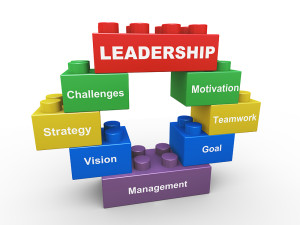
As leaders, we are usually required to give feedback to our team members on a regular basis. But it can often be challenging to get the feedback we need to grow. The more senior our position, the more challenging it can be to get feedback.
Of course, most of us receive lots of feedback from our direct supervisors about how we’re performing. This feedback is crucial for ensuring that we’re on track to leading our team to achieve the goals that are important to our organizations.
Just as important, and perhaps even more so over the long-term, is to get feedback from our team members on how we’re doing as leaders.
In many cases, especially in organizations in which senior leadership “manages by the numbers,” by the time we get feedback from our supervisors it’s very difficult to get things back on track. If we’re told that we’re not achieving the numbers we need to achieve, it’s because we haven’t created and sustained a team culture that allows the members of our team to thrive.
By the time the effects of an average or poor team culture can be seen in the numbers, transforming the culture might be a significant challenge. It could take a long time to reestablish trust, communication, and the positive emotional climate that is essential for sustainable performance.
A simple way to avoid this fate is to regularly request anonymous (whenever possible) feedback from our direct reports regarding how well we are serving and caring for the members of our teams and living the core values of our organizations.
This is a great way, in and of itself, to serve the members of the teams we lead.
By simply asking for feedback about how well we are serving and caring for team members and living the values, we send the message that we care about our team members and about living our core values. If we take action on the feedback we receive, it sends an even stronger message communicating that we truly care about these essential aspects of effective leadership.
Below are the questions I ask to get feedback on how well I’m serving and caring for team members and living our core values. Essentially, I’m asking, “How well do I love you?”
How often do you ask for feedback?
What are the questions you ask?
I’d love to hear your thoughts in the comments.
Team SurveyPlease rate Matt on a scale of 1-5 regarding how often he exhibits the behaviors questioned below. The questions are organized via our core values.
1 = Never
2 = Rarely
3 = Sometimes
4 = Often
5 = Consistently
Serving the Greater Good: Our focus is serving the greater good, not accumulating wealth. We use revenue not as a means to accumulate wealth and possessions, but as a way to meet our basic needs and make a greater impact in the world. We believe that we can realize extraordinary business outcomes and a more fulfilling life by focusing on making the greatest positive impact on the people around us and on the world in general.
1. How often does Matt prioritize applying business revenue to growing the impact of our company ahead of applying it for personal gain?
Long-term Success: We are focused on building a sustainable organization that will be able to serve the greater good for many years. Although we set and pay attention to short-term goals and metrics, we do not allow short-term goals and metrics to take precedence of over long-term success.
2. How often does Matt prioritize the long-term success of the company over short-term wins?
People First: All business success is dependent upon people and healthy relationships with people inside our organization, as well as customers, vendors, our community, and other organizations doing similar work. We aspire to always put people ahead of short-term wins, and to treat all people with respect, kindness, and compassion. We look to create win-win solutions at all times.
3. How often does Matt treat you with respect?
4. How often does Matt treat you with kindness?
5. How often does Matt offer you compassion?
6. How often does Matt look to create win-win solutions for clients?
7. How often does Matt look to create win-win solutions for you and the organization?
8. How often does Matt consider and care about your legitimate needs?
Excellence: Motivated by our aspiration to be of greatest service to others, we aspire to grow each and every day both personally and professionally. We believe that if something is worth doing, it is worth doing well, so we aspire to maintain a high standard of excellence in all that we do.
9. How often does Matt inspire you to purse excellence in all that you do?
10. How often does Matt set clear expectations for tasks?
11. How often does Matt clearly define what success looks like?
12. How often does Matt ensure that you have everything you need to complete tasks?
Happiness: We believe that our own happiness is a powerful tool for serving both ourselves and others. We aspire to develop true happiness, which is not dependent upon external factors like money, fame, power, possessions, or entertainment. We aspire to spend adequate time nourishing true happiness.
13. How often does Matt make you feel as though your happiness is important to him?
Right Speech: We understand that without open, honest, helpful communication, trust cannot exist. Without trust, success is not possible. We aspire to maintain strong, healthy lines of communication.
14. How often does Matt make you feel truly heard?
15. How often is Matt’s communication internal to the organization completely open?
16. How often is Matt’s communication external to the organization completely open?
17. How often is Matt’s communication completely honest, even at the most subtle levels, internal to the organization?
18. How often is Matt’s communication completely honest, even at the most subtle levels, external to the organization?
19. How often is Matt’s communication kind and helpful internal to the organization?
20. How often is Matt’s communication kind and helpful external to the organization?
______
Did you like what you read?
You can sign up here to get all my posts via our free eZine, which is full of great articles on personal and leadership development. You’ll also get a $15 eBook for free.
















